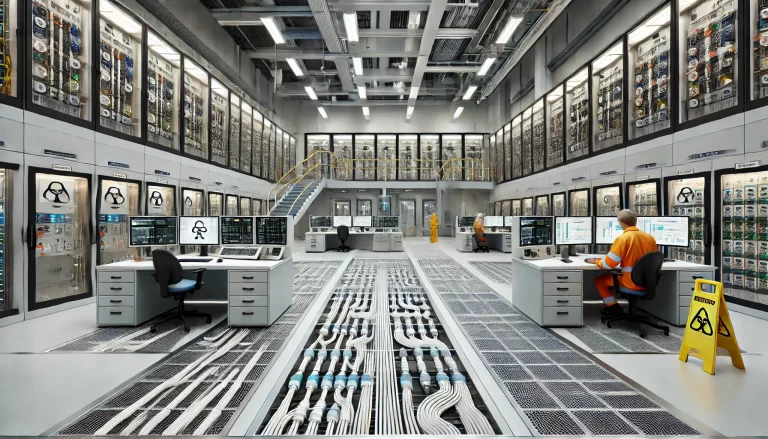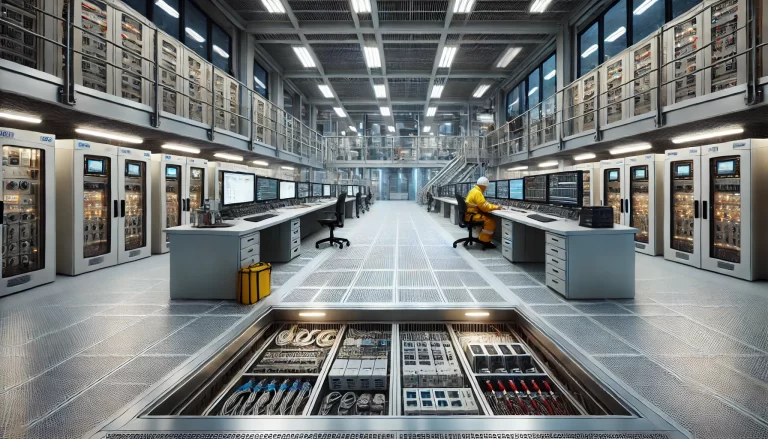1. Introduction to STS (Static Transfer Switch)
A Static Transfer Switch (STS) is an advanced electronic switch used in Uninterruptible Power Supply (UPS) systems to ensure seamless and reliable power transfer between two independent power sources. Built with semiconductor devices such as Silicon-Controlled Rectifiers (SCRs) or Insulated-Gate Bipolar Transistors (IGBTs), STS can switch power sources in a matter of milliseconds, minimizing the risk of power disruption.
In today’s digital world, continuous power supply is critical for data centers, hospitals, financial systems, and industrial automation. STS plays a vital role in achieving this reliability.
2. The Role of STS in UPS Systems
STS serves as the backbone of many redundant power systems, offering critical functionality, including:
- Seamless Power Transfer: Instantly switches the load between two power sources (e.g., primary and backup UPS) without disrupting the connected devices.
- Power Source Redundancy: If one UPS or power source fails, STS ensures an automatic transfer to the backup source.
- Power Quality Management: STS monitors voltage, frequency, and phase synchronization to ensure optimal power delivery.
- System Reliability: By providing an alternative path for power, STS reduces the risk of downtime caused by faults in a single power source.
- Minimized Downtime: Compared to traditional mechanical switches, STS switches in milliseconds, reducing downtime risks.
In essence, STS acts as a safety net for mission-critical equipment.

3. How STS Works in a UPS System
An STS typically has:
- Two Inputs: Connected to two independent power sources (e.g., two UPS systems, or one UPS and one utility power source).
- One Output: Directly connected to the critical load (e.g., servers, medical equipment).
- Monitoring System: Continuously monitors the status of the two input sources, including voltage, frequency, phase alignment, and other quality parameters.
Switching Logic:
- Under normal conditions, the load is powered by the primary source.
- If the primary source deviates from pre-set parameters (e.g., voltage drop, phase mismatch, or frequency fluctuation), the STS quickly switches to the secondary source.
- Once the primary source stabilizes, the STS can either return to it or stay with the secondary source, depending on the system configuration.
Switching Time:
- Typical switching time is 4–8 milliseconds, which is fast enough to avoid disruption for most electronic devices.
- If both sources are phase-synchronized, the switch is almost seamless, preventing transient voltage spikes or drops.
4. Key Architectures Using STS in UPS Systems
4.1 Single UPS + STS Architecture
- Setup: One UPS supplies power, with STS connected to a secondary backup source (e.g., mains utility power).
- Operation: If the UPS fails, the STS immediately switches to the backup source.
- Pros: Cost-effective and simple.
- Cons: Single point of failure if the UPS encounters a critical failure.
4.2 Dual UPS + STS Architecture
- Setup: Two independent UPS systems provide power to the STS.
- Operation: The STS selects the better power source in real-time based on power quality.
- Pros: Redundancy eliminates single points of failure.
- Cons: Higher cost and more complex management.
4.3 Multi-UPS + STS + Bypass Architecture
- Setup: Multiple UPS systems are connected to STS units, with an additional static bypass for ultimate redundancy.
- Operation: The STS intelligently manages multiple power sources and can divert power through the bypass if needed.
- Pros: Maximum fault tolerance and reliability.
- Cons: High cost and engineering complexity.
5. Technical Challenges in STS Implementation
While STS systems are highly effective, they face several technical challenges:
- Phase Synchronization: For seamless switching, the two power sources must be phase-aligned.
- Load Compatibility: Non-linear loads can cause harmonic distortion, complicating switching operations.
- Power Quality Variations: Voltage and frequency mismatches between sources may trigger false switching.
- Heat Management: Semiconductor switches generate significant heat, requiring proper cooling systems.
- Cost: High-quality STS devices with advanced monitoring systems can be expensive.
6. Advantages of Using STS in UPS Systems
- Ultra-Fast Switching: Reduces downtime caused by power source failure.
- Improved System Redundancy: Dual or multiple power sources ensure continuous operation.
- No Mechanical Wear and Tear: Unlike mechanical relays, semiconductor-based STS devices have no moving parts.
- Enhanced Power Monitoring: Real-time data analysis ensures optimal performance.
- Flexible Integration: Easily integrates with modern UPS and data center architectures.
7. Applications of STS in Critical Environments
- Data Centers: Continuous power supply is essential to prevent data loss and server downtime.
- Healthcare Facilities: Ensures life-support systems and critical medical devices remain operational.
- Financial Institutions: Prevents service interruptions in trading platforms and transaction systems.
- Industrial Automation: Maintains seamless operation in production lines and automated systems.
- Telecommunications: Ensures uninterrupted connectivity and data transmission.

8. The Future of STS Technology
- Smart STS Systems: Integration with AI and Machine Learning for predictive maintenance and intelligent switching decisions.
- Advanced Semiconductor Materials: Adoption of Silicon Carbide (SiC) and Gallium Nitride (GaN) for higher efficiency and lower heat generation.
- Modular STS Design: Allows scalability and ease of maintenance in large infrastructures.
- Enhanced Monitoring Tools: Real-time remote monitoring via IoT platforms.
9. Conclusion
The Static Transfer Switch (STS) is a critical component in modern UPS systems, ensuring continuous, reliable power supply for mission-critical applications. By enabling seamless power transfers, STS systems reduce the risk of downtime, protect valuable equipment, and improve overall power system resilience.
As technology advances, we can expect smarter, faster, and more efficient STS devices to play an even greater role in securing power reliability across industries.
For industries requiring uncompromised power stability, investing in STS technology is not just an option but a necessity.
